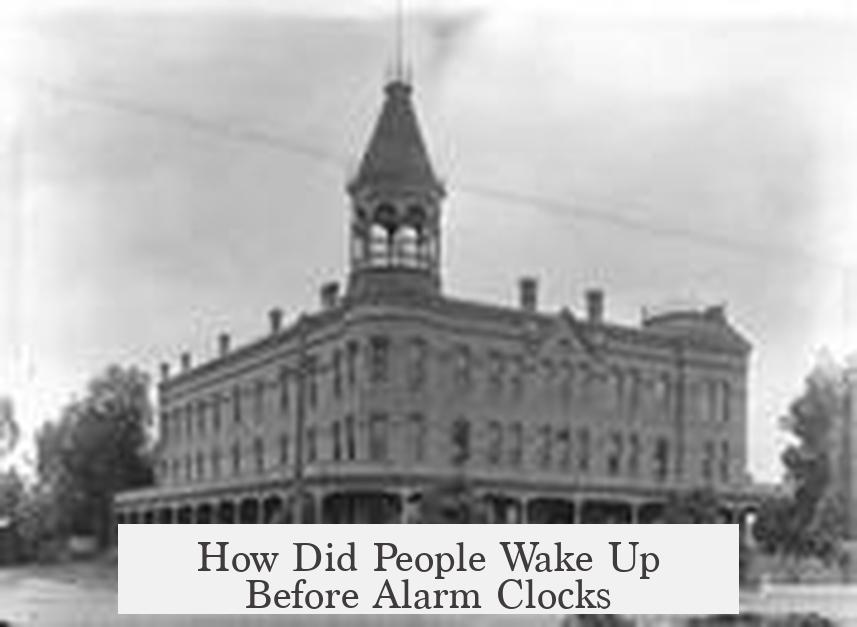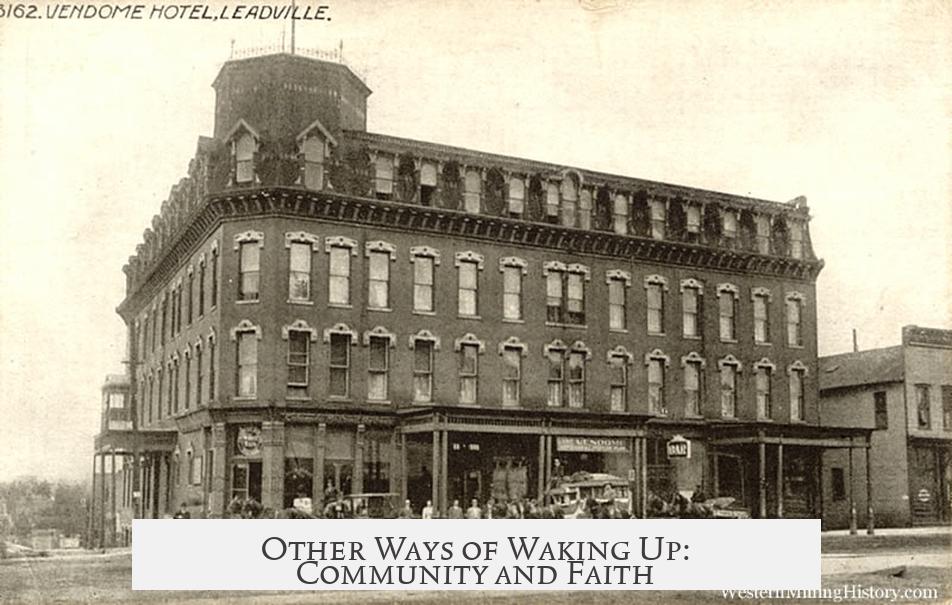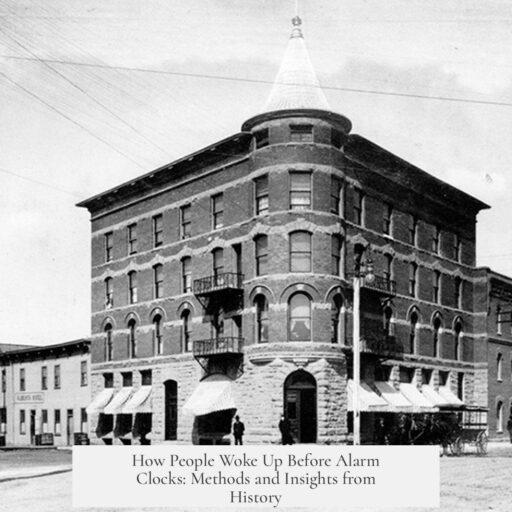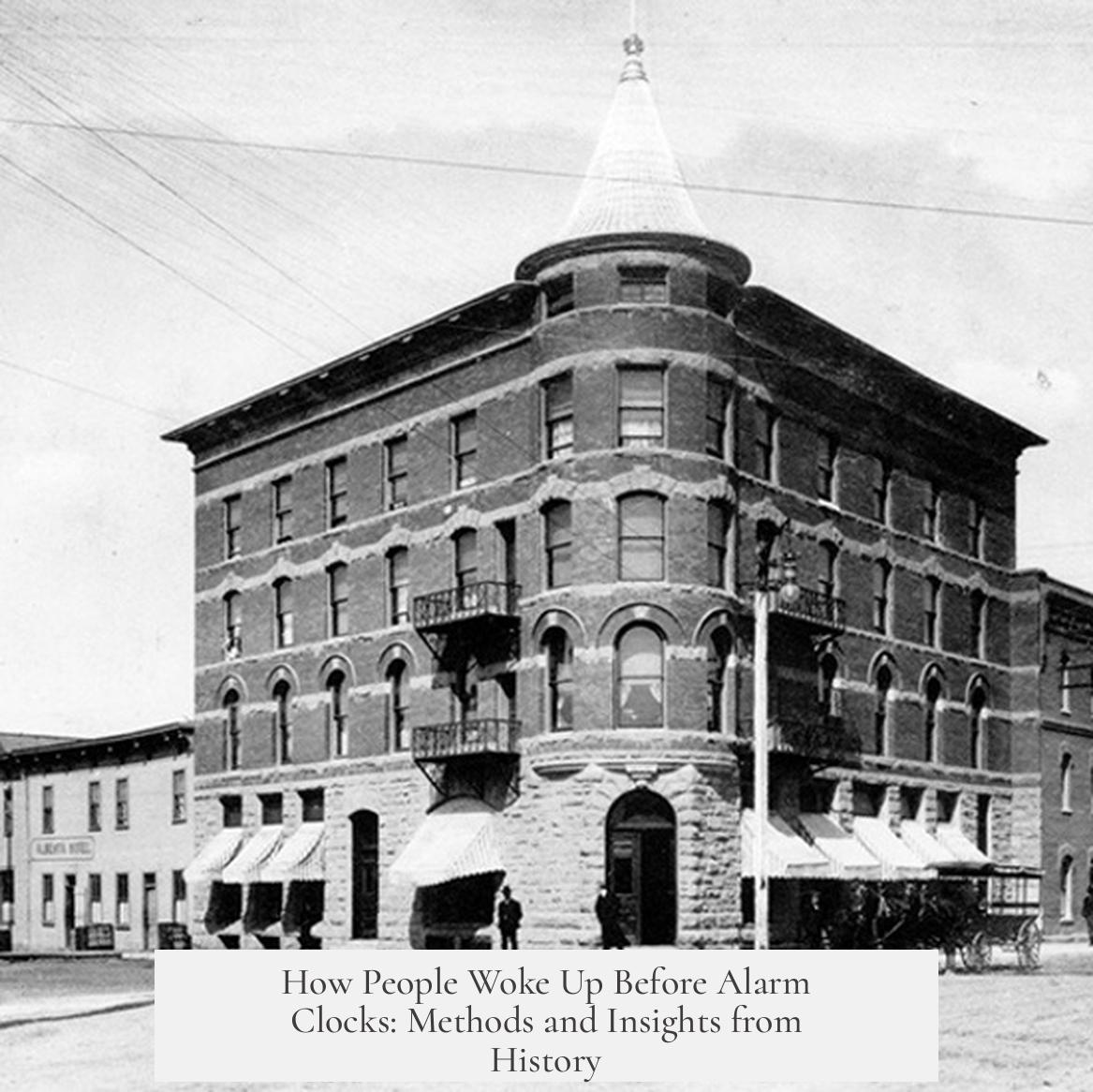Before alarm clocks, people woke up using natural, social, and manual methods shaped by their environment and lifestyle.
Most people lived by farming schedules. Their days started at sunrise because they needed to tend animals and fields. There was no hurry to wake up with artificial sounds. Instead, the sun dictated their rhythm. Artificial lighting was costly and rare, so bedtime came early, usually shortly after sunset. This early sleep made waking early easier and more natural.
People commonly followed a segmented sleep pattern, sleeping in two distinct phases. They went to bed around 8 or 9 PM, slept for three to four hours (the “first sleep”), then stayed awake for one or two hours. During this waking period, they might talk, smoke, or work quietly. Afterward, they returned to bed for a “second sleep” of about four hours. This structure allowed a natural waking process aligned with daily tasks without needing alarms.
In towns and cities during the industrial age, some workers needed help waking up on time. Professional “knocker-ups” fulfilled this role. They walked the streets, tapping on windows with sticks or shooting peas at glass to awaken clients. This service ensured timely wakes before alarm clocks became affordable and common.
Communities also relied on collective signals. Religious calls such as those by Muezzins for prayer served as wake-up calls long before mechanical alarms. Social waking was typical—people shared sleep environments or neighborhoods where waking early was a communal habit.
| Method | Description | Context |
|---|---|---|
| Natural Light | Rise with sunrise and retire at sunset | Farming and rural life |
| Segmented Sleep | Sleep in two phases separated by a waking period | Pre-industrial, common across societies |
| Human Alarm | Knocker-ups tapping or shooting peas on windows | Industrial towns and cities |
| Community Calls | Religious or social wake-up calls | Various cultures, e.g., call to prayer |
Understanding these methods shows how human routines adapted without technology. People relied on sunlight, social structures, and manual signals to wake up. Their sleep and waking habits fit their daily needs and the resources they had.
- Farming needs and daylight regulated sleep schedules.
- Segmented sleep allowed flexible nighttime activity and natural waking.
- In cities, human alarms ensured punctuality.
- Community and religious calls served as wake-up cues.
How Did People Wake Up Before Alarm Clocks?

People woke up before alarm clocks mainly by syncing their lives with natural rhythms, social habits, and simple human ingenuity. Before the buzz and beep of digital alarms, waking up was more of a communal and nature-driven event than a solo mission against a snooze button.
Curious how this worked in real life? Let’s dive into history and uncover the clever ways humans managed mornings without the tech we take for granted today.
Waking Up on Nature’s Schedule
For centuries, most people were farmers. Their workday began when the sun showed up—and ended when it went down. Without electric lights, it was pointless to stay awake after dark. Candles and oil lamps were costly. So, people hit the hay early and woke up early.
Farming chores demanded promptness: milking cows at dawn, tending fields, and feeding livestock. This created a natural alarm clock in the form of daylight itself.
This lifestyle made waking a group activity, not a solitary affair. Families and communities rose and rested together. The concept of “solitude” was rare; people’s days and nights were synced like a well-rehearsed choir.
The Secret of Segmented Sleep: First Sleep and Second Sleep
Ever heard about segmented sleep? It’s a fascinating term that might make you rethink your eight-hour slog. Historians like Roger Ekirch uncovered that people slept in two phases: a first sleep of a few hours, then a waking period lasting 1-2 hours, followed by a second sleep.
During the waking interval, folks might smoke a pipe, chat, visit neighbors, or even sneak in a bit of romance. There’s even evidence of using this quiet time for secret dealings—talk about a nocturnal hustle!
This broken-up sleep pattern meant natural wake-ups without alarms. By catching the sun early after their second sleep, people were ready to greet the day. The rhythm of segmented sleep allowed the body to reset and rise refreshed. No buzzing needed.
If this surprises you, dive into Ekirch’s 2001 article “Sleep We Have Lost: Pre-Industrial Slumber in the British Isles”. It’s a goldmine for anyone intrigued by sleep history.
Human Alarm Clocks: Meet the Knocker-Ups
As the Industrial Revolution kicked in, big cities grew, and farms shrank in influence. Factory shifts needed people on time—no natural rhythms to rely on anymore. Enter the knocker-ups, human alarm clocks hailed as the unsung heroes of punctuality.
These dedicated individuals walked through neighborhoods at early hours, knocking on windows to wake workers. Their tools? A sturdy stick or sometimes a pea-shooter, which made a popping noise against glass. Imagine waking up to a noise that’s part percussion concert, part doorbell!
Knocker-ups often had schedules: waking one house before hurrying to the next. This method was highly effective and more reliable than waiting for roosters or sunrise. It also added a social touch to waking up—no lonely beeping here.
Photographs and literature from the era document these figures, adding a charming glimpse into past life before alarm clocks beeped into existence.
Other Ways of Waking Up: Community and Faith

Beyond farms and factories, various communities used sound calls to mark time. In mosques, Muezzins chanted the call to prayer at dawn and other times. This practice served as a natural alarm for many long before clocks existed.
The idea is simple: living close and responding to a communal signal connects people in their daily routines. The ringing of church bells, calls from town criers, or rooster crowing also kept societies aligned with time’s flow.
What If You Want to Channel These Old-School Wake-Up Habits Today?
- Try syncing your schedule with natural daylight. Wake up as the sun rises for a more refreshing start.
- Experiment with segmented sleep if your lifestyle allows—bed early, wake once or twice for quiet time, then back to sleep.
- Use social motivation: arrange a morning walk or workout with friends to get yourself moving without an alarm.
Of course, no one expects you to hire a modern knocker-up—unless you’re willing to be that person!
Why Does This Matter Today?
The modern life bombardment of screens, artificial light, and digital noise disconnects many from natural sleep rhythms. By understanding how humans naturally woke up before alarms, we can rediscover healthier, less stressful ways to greet the day.
Besides, there’s something charming about knowing your ancestors didn’t rely on shrill beeps. They trusted the sun, sound, and community. Maybe, just maybe, we should too.
Final Thoughts
Before alarm clocks, people woke naturally by tuning into the environment, shared social habits, and ingenious human alarm services. The lack of artificial light and the segmented sleep pattern supported early rising. Knocker-ups in cities served as live alarm clocks, knocking windows to jolt workers awake.
So next time your alarm cuts through your dreams, remember: humans once perfected waking without it. Maybe that’s a lesson in waking up to life itself, not just the time.




